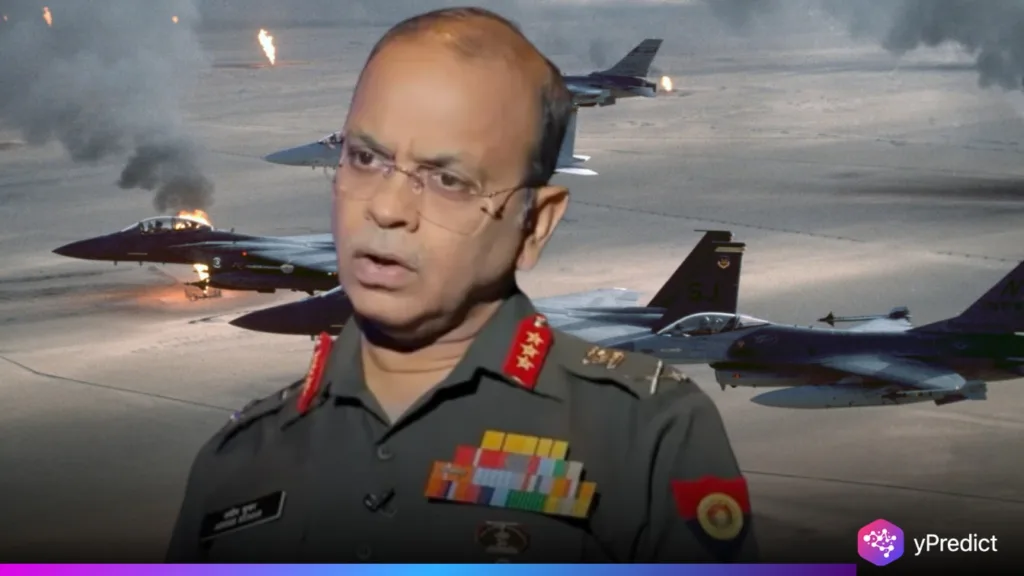
Sidhant Sibal’s X post replayed an interview with Lt. Gen. Adosh Kumar, Director General of Artillery, Indian Army. The general talked about next-generation warfare, with AI-capable drones and precision munitions. He characterized modern warfare as hybrid, high-intensity and multi-domain — land, sea, air and cyber. These views are indicative not just of India’s, but of world military thought. Nations spend fortunes on high tech that optimizes low risk/high fighting effectiveness. Adosh Kumar’s tech-centric focus underscores how contemporary militaries adjust to the need for transparency and accuracy. His worldview injects urgency into discussions of defense innovation and geopolitical security puzzles.
Adosh Kumar AI, UAS Multi-Domain WAR
Lt. Gen. Adosh Kumar said future wars will require simultaneous multidimensional operations. Land, sea, air, cyber and space need to all connect seamlessly for maximum battlefield advantage. He contended that it’s the surveillance and reconnaissance systems that encourage transparency, and demand a fast, precise reaction. AI-driven drones, as highlighted by Adosh Kumar, are the next-gen precision strike. These systems reduce collateral damage by making strikes more precise and decreasing civilian casualties. They also restrict human contact, in accordance with soldier-protection-through-technology tenets. For the Indian Army, riding these systems instills fighting proficiency with less dangers.
Precision guided munitions, too, are another pillar of Adosh Kumar’s vision of combat to come. These arms let small units punch up, lessening their dependence on artillery. These systems also bring India’s military closer to its international counterparts, most notably the U.S. DoD. Global rules emphasize minimizing human effort and maximizing the advantages of digital dominance. He insisted that it’s an inevitable evolution of modern warfare. Early investors in AI, UAS, and precision weapons by those nations benefit. This tech-powered transition demonstrates how anticipation and innovation characterize victory on the battlefields of tomorrow. India’s strategy mirrors these realities.
Geopolitics and the Indian Army
Adosh Kumar puts India’s defense posture in the present tense of our tense world. Wars in Europe and West Asia drive faster tech adoption and defense budgets worldwide. And it’s partnerships, especially Indo-Pacific ones, that underscore all the more the need for multi-domain preparedness and innovation. The General named it OP SINDOOR, underscoring India’s focus on Atmanirbhar systems and supply chain resilience. For Adosh Kumar, self-reliance protects the Army from external threats in a shifting global order. Just a smidge of NATO exercises and ACT’s multi-domain sync in the mix. He contended that India cannot anymore rely on brittle foreign supply chains for defence requirements.
Adosh Kumar also emphasized non-contact warfare where fighting was based on indirect fire arms and accurate targeting. Missiles, rockets and autonomy are deadly together in today’s battlespaces. He contended that these vectors provide strategic leverage, diffusing your impact while minimizing your exposure to counterattack. That emphasis signals India adjusting to a form of warfare in which range and accuracy characterize lethality. Research on autonomous weapons corroborate Adosh Kumar’s observations that AI is reshaping the battlefield. These systems are accurate and fast and flexible, changing the way militaries fight campaigns. He argues the mix of old-school muscle with new tech makes for hardness and adaptability. The Indian Army’s developing doctrine mirrors a worldwide shift toward advanced, network-based combat.
Adosh Kumar and The War Ahead
Lt. Gen. Adosh Kumar’s tech foresight captures how tech is changing Indian and global defense He posits modern warfare as hybrid, multi-domain and dependent on AI-enabled systems. From smart bombs to drones, these technologies revolutionize warfare and minimize collateral damage. Adosh Kumar emphasizes preparedness, self-reliance and innovation as the foundation of India’s military future. His vision echoes world-wide religions that value risk avoidance and technology optimism. Combining old-school cannons with new-school digital systems, Adosh Kumar imagines a 21st-century fighting force. And his words echo to us: military readiness depends on technology foresight now.







